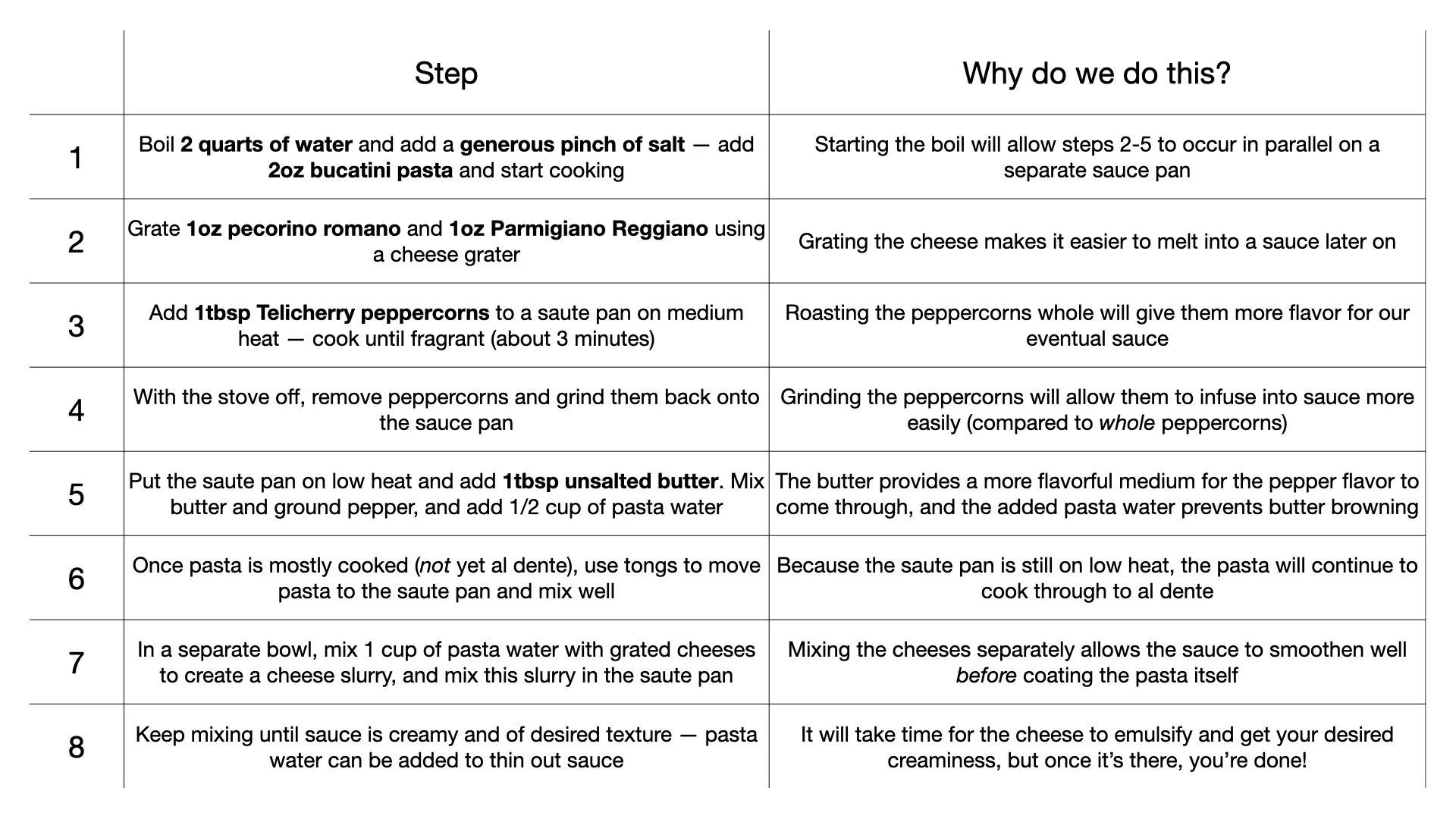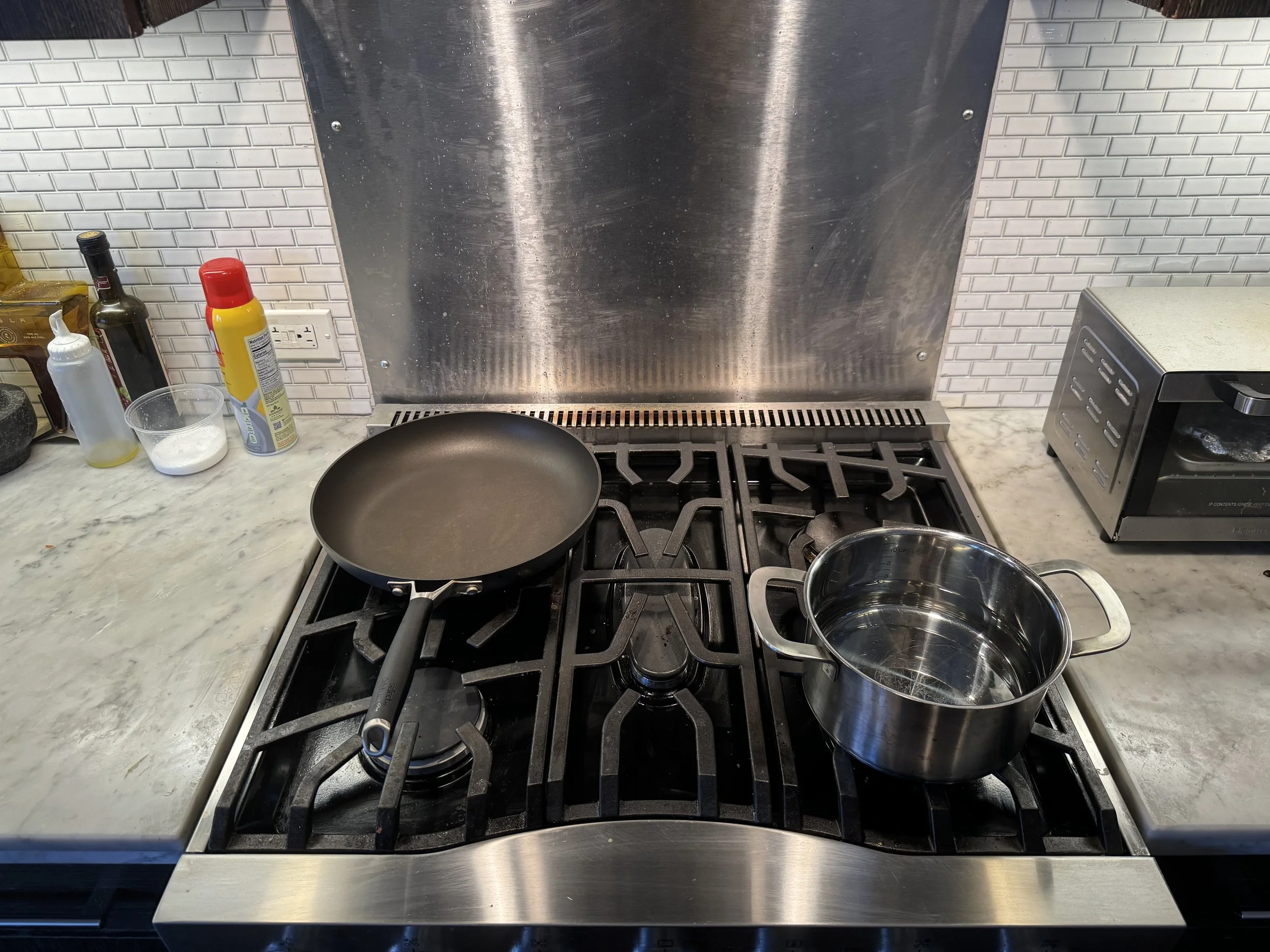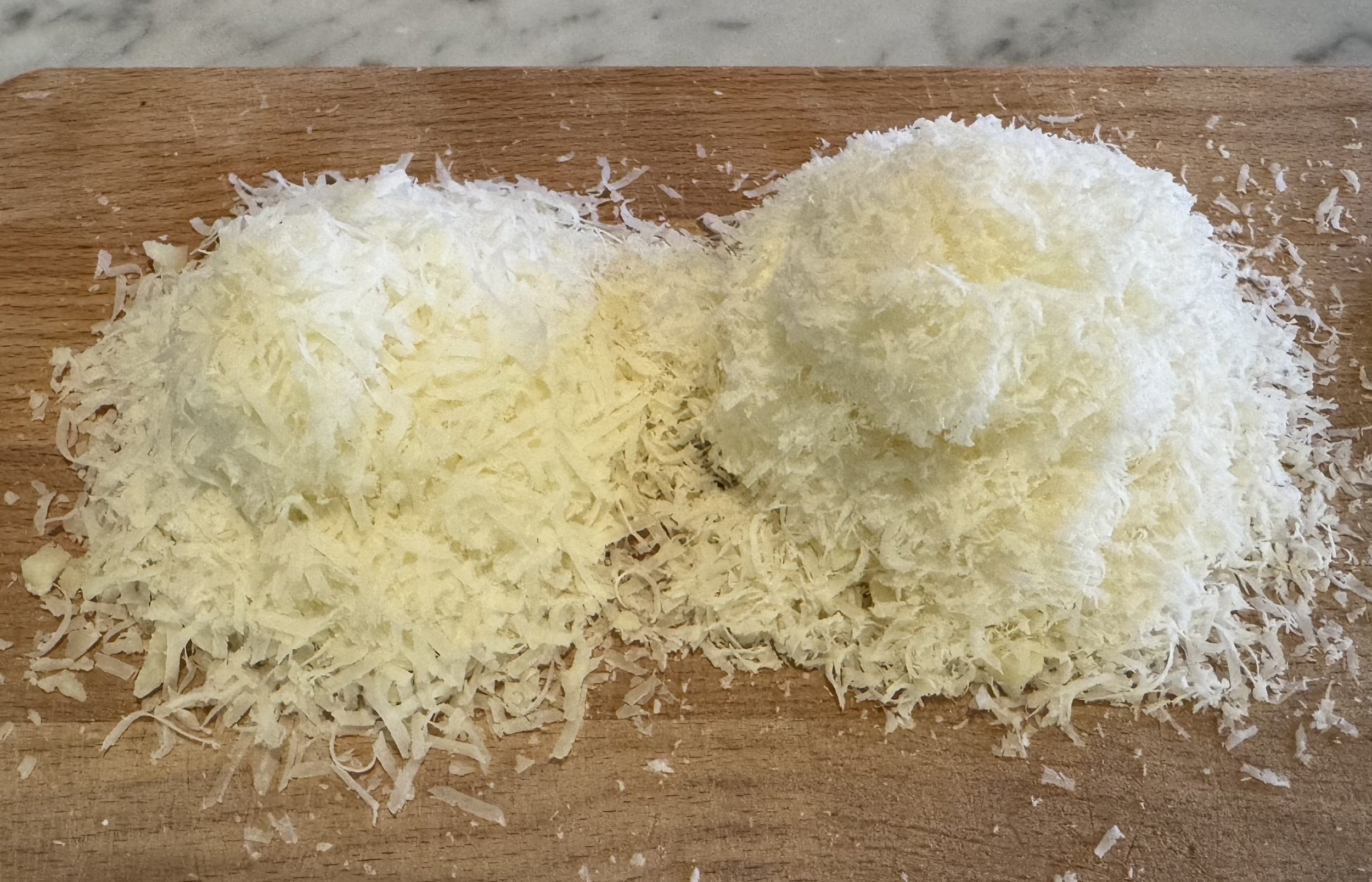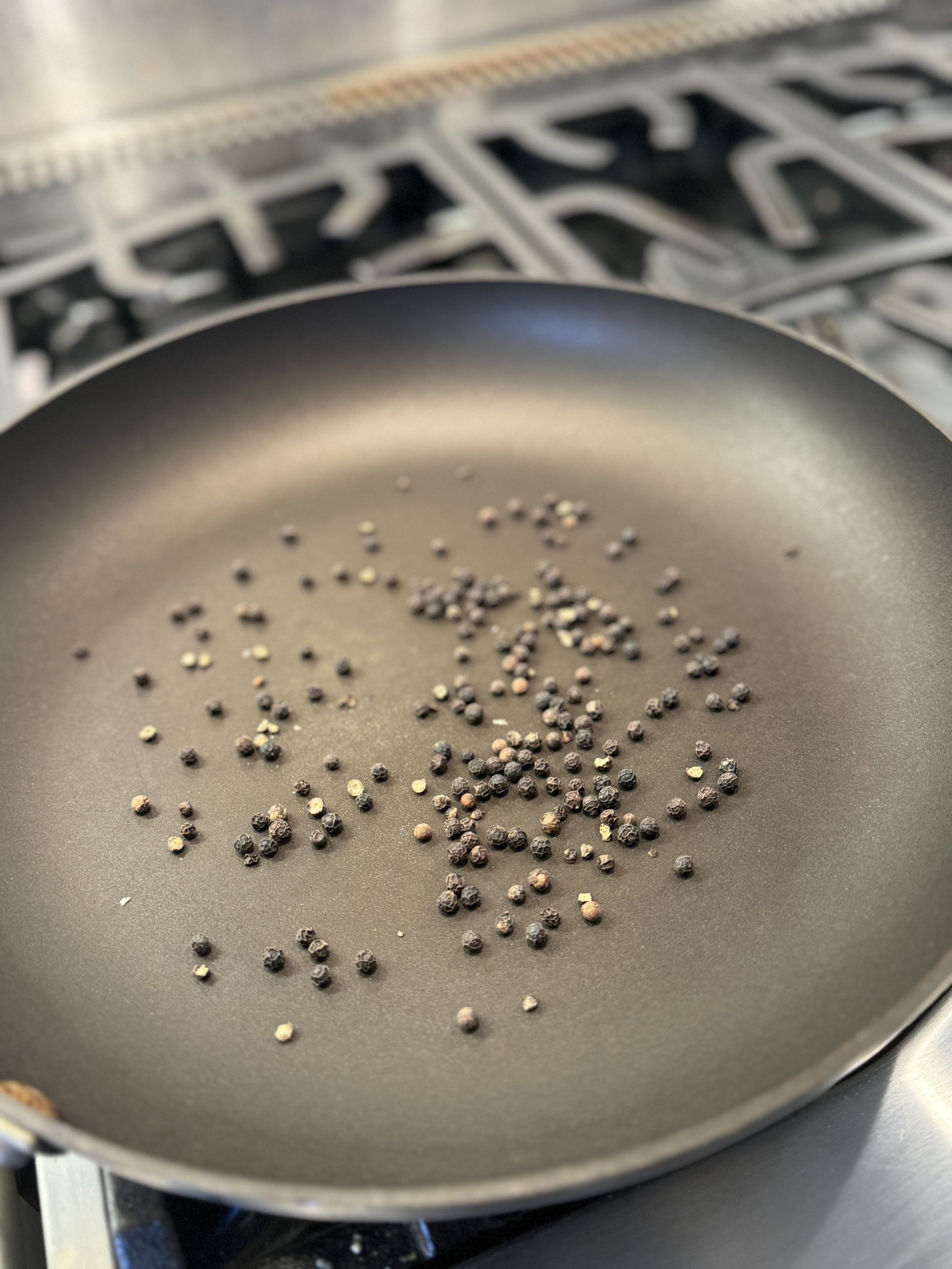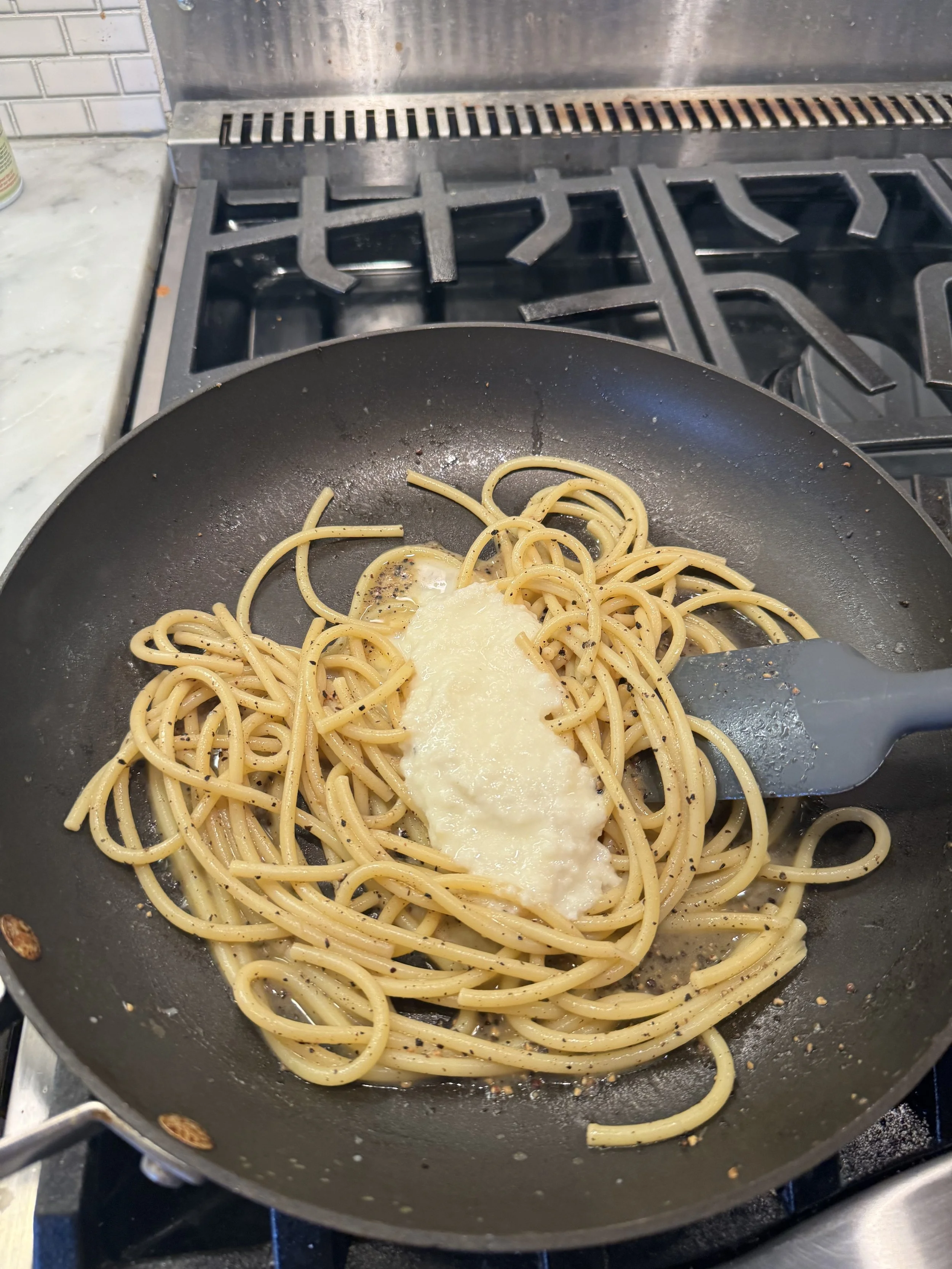The Grand Return: Cacio e Pepe
I have always enjoyed cooking and appreciated the art of a good meal. To me, food is more than just sustenance: good food is truly memorable and its enjoyment is almost visceral in nature. This makes sense given that the search for food is a primal instinct.
I struggled to learn how to cook at first. I have meticulously followed recipe books, and while the end product satisfies, I did not gain more cooking intuition and could not think of ways to improve the dishes in front of me. I could add more salt, reduce the amount of garlic, but what else? I was not learning more despite cooking for years, and that bothers me. I have an engineering background (specifically in materials science), and in the lab, I always tried to intuit why I do something specific and explain that reason. A few years ago, a professional mentor of mine always insisted that while lab procedures and chemical reactions may seem too complex to grasp, truly every step has a concrete reason attached to it, and once you know the reasons, each step in the process is much clearer (and also easier to remember!). The kitchen, after all, is simply a chemistry lab without the toxic material warnings (everything is edible in your kitchen, hopefully). That level of intuition and understanding — the why behind every action — is what I seek to both learn and provide for others in this blog.
In short: I want to share my self-taught cooking intuition while sharing growth in my own cooking journey to level up my own game.
The history and sociological aspects of food also fascinate me, which is why I spend a good deal of effort learning about the origin of each ingredient and why we use it — this doubles as an intuitive method for understanding how and why specific ingredients and methods are used! Without further adieu, let’s dive into a recipe with just five ingredients but a world of complexity under the surface — cacio e pepe!
In Italian, cacio e pepe translates to “cheese and pepper” in English. It’s usually paired with the name of the pasta being used e.g. spaghetti alla cacio e pepe. I first discovered this recipe at a restaurant in my neighborhood (shoutout to Penny Roma!), where it’s listed as tonnarelli alla cacio e pepe. You get the idea — it’s pasta + cheese + pepper, and in total, there are only five ingredients:
Unsalted butter: any brand will do. I personally use Kerrygold Pure Irish Butter for no great reason other than it’s available in bulk at Costco
Bucatini (spaghetti-like) pasta: bucatini is ideal for this recipe. Spaghetti is a cylinder, and bucatini is a hollow cylinder, which makes it ideal for sauce-heavy recipes like cacio e pepe, as the sauce fills up that hollow area to pack flavor in every bite. In fact, bucato in Italian means “pierced hole”, giving the pasta its name. That being said, spaghetti will get the job done here if you’re unable to easily find bucatini.
Black peppercorns: the type of peppercorn used here doesn’t matter too much, though make sure to use whole peppercorns, as we will roast and grind them later on. Tellicherry peppercorns, from India’s Malabar coast in the area surrounding modern-day Thalassery (തലശ്ശേരി), are a great option. They have been used in Italian cuisine since antiquity, fed by the rich spice trade between Europe and South Asia.
Pecorino romano: fromaggio pecorino romano translates to “Roman sheep’s cheese”. This cheese is named for the fact that it was historically made with sheep’s milk (specifically in Rome), but due to legal changes in the late 1800s, almost all production moved out of Rome, and in today’s world, 96% of the world’s pecorino romano comes from the island province of Sardinia (see here for even more info)! We use pecorino romano here due to its salty and crumbly nature: the saltiness enhances flavor and the crumbly nature makes it perfect for grating and melting into a sauce
Parmigiano Reggiano: similar to pecorino romano, the name of this cheese translates to it’s place of origin — the provinces of Parma and Reggio Emilia, both in Italy’s culturally rich Emilia-Romagna region. I’ve capitalized both words in the name of this cheese on purpose in order to highlight the origin from two distinct provinces (while also ascribing to the global PDO guidelines for this cheese). Parmigiano Reggiano’s subtler nutty and fruity undertones give our final dish more complex flavor than the salty pecorino romano. Fun fact: ~60% of the workforce that makes this cheese is of Indian origin, mostly from the Punjab region, which has a similar topography to Emilia-Romagna (see here for more).
For the cheeses, I strongly recommend buying them in blocks (likely from your store’s deli) and grating them yourself. When these are ground/grated ahead of time, manufacturers may apply anti-stick coatings to the ingredients to prevent clumping while on the shelf. This is not good for this dish: we want to melt the cheeses together into a flavorful sauce, and the anti-stick coatings will lead to a lumpy finish instead of a smooth consistency.
Alright, enough info on the ingredients. Here’s the recipe in the most intuitive way possible with all the explanations you need to make it perfectly! More images illustrating each step can be found below the recipe itself
Step 1: start boiling 2 quarts of water with a generous pinch of salt. The next steps of the recipe can take place in a separate saute pan in parallel in order to save time, which is why I have a dual-pot setup
Step 2: grate the pecorino romano and Parmigiano Reggiano cheeses — yum!
Step 3: cook the whole Telicherry peppercorns on medium heat until fragrant — it will smell roasty!
Step 5: after the pepper is roasted and ground, add it back with unsalted butter on low heat
Step 6: add pasta in with tongs and pasta water (saute pan still on low heat)
Step 7: add the cheese and pasta water slurry (mixed in a separate bowl) to the saute pan, still on low heat
Step 8: mix everything together until the sauce has reached your desired level of creaminess, and you’re done! This dish is now ready to serve!
Once this recipe is complete, you can add some crushed red pepper for an additional spice kick, though I’ve found that the tablespoon of black peppercorns used here provide sufficient heat for most folks.
This recipe is very simple in both theory and practice yet is sure to delight. As a massive cacio e pepe fan, I knew that this recipe would be perfect for my return to posting on this pandemic-era blog. What better way for us to celebrate the post-pandemic blog return than a delicious and simple meal?


